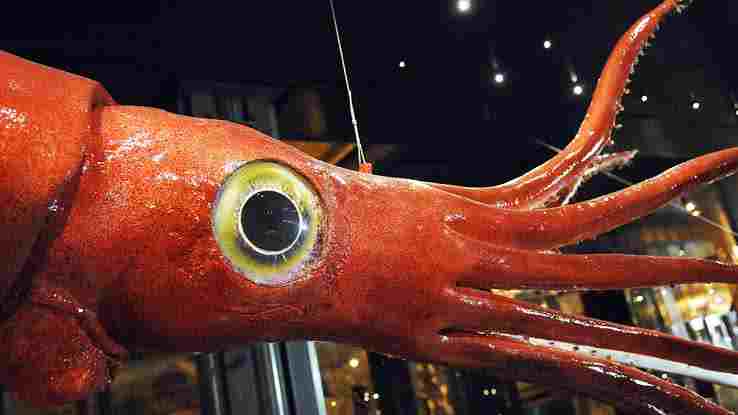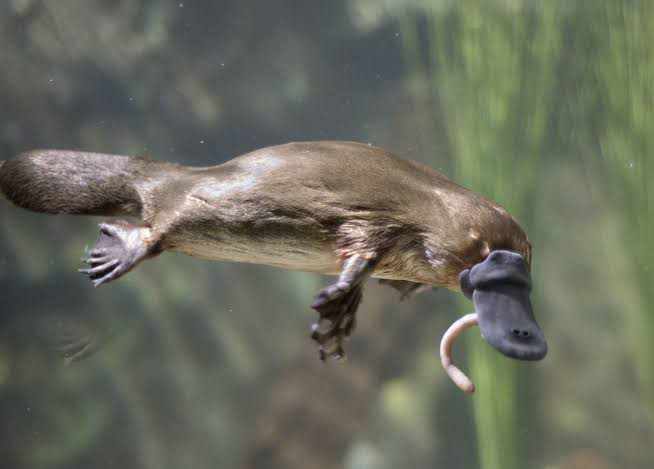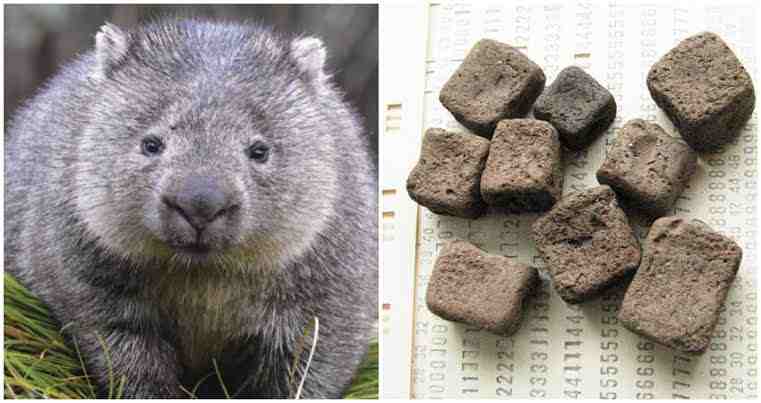Topics in Biology
Cellular respiration in biology Len Academy biology mock questions for waec Len Academy biology midterm questions for SS1, 2nd Term Characteristics of saltwater habitat Aquatic habitat explained with its types Types of habitat: Terrestrial habitat explained with examples What is habitat? Difference between plant cell and animal cell Nucleus explained with its structures Nucleus explained with its types and functions Organelles of the cell explained with their characteristics Eukaryotic cell explained with its characteristics Prokaryotic cell explained with its structure Characteristics of prokaryotic cell Concept of cell Cell theory in biology Importance and limitations of ecological pyramid Protists explained with their characteristics Contents of the scrotum: Epididymis, vas deferens, spermatic cord and cremaster muscle Tropical savanna explained with its characteristicsAcademic Questions in Biology

From the above diagram, which of the organ below isn't a requirement for the male reproductive system?
A. Bladder
B. Ureter
C. Glans Penis
D. Testis
E. Bulbourethral Gland
F. Epididymis
A walnut shaped male accessory sex organ located between the bladder and penis is the _____.
A. Ductus Ejaculatorii
B. Bulbourethral Gland
C. Prostate Gland
D. Ductus Deferens
E. Seminal Vesicles
F. Epididymis
In a food chain, the primary consumers are classified under trophic level _____.
A. Zero
B. One
C. Two
D. Three
E. Four
F. Five
Cold blooded animals are referred to as _____.
A. Homeotherms
B. Endotherms
C. Poilokitherms
D. Ectotherms
E. Thermotherms
F. None of the above
All reptiles are vertebrates.
A. True
B. False
_____ cells are responsible for the formation of osteoblasts.
_____ is a bone that constitute the axial skeleton.
Which of the following is false concerning cartilages and bones?
Saltwater habitat is also termed as marine habitat. They include the ocean and seas which accounts for about 97% of earth's water supply. These waters cover about 71% of earth's surface, while also surrounding the continents. Therefore, they separate one continent from another.
Interestingly, the earth has one global ocean. However, they are geographically quite distinct, and may be classified into five. These are:
Pacific Ocean
Atlantic Ocean
Indian Ocean
Antarctic Ocean
Arctic Ocean
Please read on the types of aquatic habitat here.
It is noteworthy to state that the waters of the aforementioned oceans could meet at some geographical location. For instance, the pacific and atlantic oceans are the two largest oceans on the planet, covering about half the earth’s surface. Both oceans meet at the Cape Horn.
The diagram below shows five types of oceans surrounding the continents on earth.

You can read on terrestrial habitat here.
The saltwater, marine water, ocean or seawater can best be described through its characteristics. These are explained below:
The marine water is the largest of all aquatic habitat. It is indeed a vast body of water comprising the seas and oceans. It is worthy of note to state that the terms ocean and sea may be used interchangeably. However, both are not necessarily the same.
The main differences between the ocean and sea is its size and bother with land. An ocean is much larger than the sea; and together, they cover about 71% of the earth's surface. However, the ocean contains less salt than the sea.
Seas refers to the waters situated at the margins of the ocean, and are partly bordered by land. In this regard, you can think of the sea as an extension of the ocean. Therefore, an ocean may have one or more seas.
The volume of of water contained in the ocean is about 1.37 billion km3, and this is equivalent to approximately 97.5% of earth's water. This great amount of oceanic waters cover an area of approximately 361 million km2 (or 139 million miles2).
Please read interesting facts for students here.
The table below shows the types of ocean, their region of presence and size.
| Ocean | Region of Presence | Area size (Km2) |
| Pacific ocean | Between North America, South America, Asia and Australia | 168,723,000 (46.6%) |
| Atlantic Ocean | Between Africa, Europe, North America and South America | 85,133,000 (23.5%) |
| Indian Ocean | Between Asia, Africa and Australia | 70,560,000 (19.5%) |
| Antarctic or Southern Ocean | Between Antarctica, the Pacific, Indian and Atlantic Ocean | 21,960,000 (6.1%) |
| Arctic Ocean |
Between North America and the Arctic |
15,558,000 (4.3%) |
The intensity of light differs within the ocean and seas. It is highest at the water surface and decreases downwards to about 200 meters (or 660 ft).
The region of light in the ocean is termed epipelagic zone (or sunlight zone). Plants utilizing sunlight energy are present on the epipelagic zone of the ocean.
There is no sunlight energy at the bottom of the ocean. For this reason, nothing really grows there. However, there could be openings in the sea floor, out of which heated mineral-rich water flows. These are termed hydrothermal vents.
The ocean is generally divided into three zones based on the amount of sunlight it receives. These are summarized below:
Euphotic Zone: This is also termed as sunlight or epipelagic zone. It runs from the surface of the waters through 200 meters below. Adequate sunlight penetrates this zone; and as a result, photosynthesis occurs here, supporting the growth of plants such as phytoplankton and algae.
Dysphotic Zone: This is also termed as the twilight or mesopelagic zone. It runs from the bottom of the euphotic zone to about 1005.84 meters below. However, small amount of sunlight reaches this zone, but this is insufficient to bring about photosynthesis. For this reason, photosynthetic plants are not likely to thrive here. Organisms in this zones are dependent on downward drifting plant materials from the sunlight zone, alongside clumps of bacteria, and even some dead animals.
Aphotic Zone: No sunlight reaches this zone, making plant life absent. Present here are the midnight zone (or bathypelagic zone), with depths between 1,000 and 4,000 meters (3,280 and 13,123 feet). Another region of this oceans's perpetual darkness is termed the abyss (or abyssopelagic zone). It is present between 4,000 and 6,096 meters (1219.2 to 20,000 feet). Beyond the abyssal zone is the hadal zone (or hadopelagic zone). Organisms dwelling here may generate their own light.
Please read on autotrophic nutrition, photosynthesis and chemosynthesis here.
The letters 'pH' means 'potential of hydrogen'. It is a term indicating the degree of acidity or alkalinity of a solution. At the time of writing this article (November 2023), the ocean pH remained somewhat alkaline at about 8.1. However, ocean acidification is an ongoing process as this may eventually lead to a decrease in the earth's ocean pH.
According to reports, the average pH of the ocean between 1950 and 2020 fell from around 8.15 to 8.05. Apparently, human activities which releases carbon IV oxide (CO2) are considered the leading cause of ocean acidification.
For ocean acidification to occur, the atmospheric CO2 dissolves into oceans and seawater, combining with these waters to form carbonic acid (H2CO3), a weak acid.
In water, hydrogen trioxocarbonate IV (H2CO3) dissociates into hydrogen ions (H+) and bicarbonate ions (HCO3-) respectively.
Please read on the concept of an acid here.
As the name implies, the saltwater (or marine water) contain larger amounts of salt (NaCl) than the freshwater and brackish water. Simply put, they are more saline than other types of aquatic habitat.
Salinity refers to an amount of dissolved salt in a quantity of water. This ratio of salt to water is measured in parts per thousand (ppt).
The average salinity of the marine habitat is about 35 - 37 parts of salt (measured in grams) per 1000 parts of water (1 liter of water). In this regard, the salinity of marine habitat can be simply written as 35ppt - 37ppt.
You can read on salts in chemistry here.
The ocean is never still since waves are always present on the surface of its waters. Waves are caused by contact of blowing wind with the surface of a water body. This contact generates energy that moves the ocean water in circular motion.
Waves transmit energy, not water. They are often caused by wind as it blows across the ocean, seas, and rivers.
There is this concept of tidal wave in oceans. They are caused from the effects of gravitational forces between earth and the moon, and between the sun and the moon. They may also be caused from the gravitational pull of the earth alone.
You can read interesting facts on gravity here.
The fluctuations seen on the ocean water level (waves) typically reaches its peak and lows twice daily. The peak (height) of an ocean's' wave could reach as much as 30 meters (100 ft).
The temperature of oceans vary at different depths. The average temperature at the surface of oceans is around 17oC (62.6oF). This can become as high as 30oC in regions near the equator. On the contrary, the ocean surface temperature are lowest near the poles.
At high latitudes, ocean waters receive lesser sunlight, and these occurs at the poles. However, more sunlight is received at the equatorial region (tropics). These variations in sunlight energy therefore implies that the ocean surface can vary from a warm 30oC (86oF) in the tropics to a freezing -2oC to -36oC(28.4oF to -96.8oF) near the poles.
Please read on the concept of heat and temperature here.
Marine water has a density of about 1.028g/cm3. This high density results for the consequence of its high salt concentration (salinity) and alternating temperatures.
With regards to temperature, lower temperature increases the density of ocean water, even more than higher salinity does.
Since the density of salt is higher in an ocean (compared to those present in other aquatic habitats), we can easily conclude that the ocean water is heavier (or more dense) than other waters, and will sink in them. However, marine organisms can easily float on its waters.
Since the temperature of ocean water decreases as we go down its depth , the density correspondingly increases (as we go down its depths) as well.
Please read more on density here.
Marine water have got the greatest concentration of oxygen around its surface. As one goes down the waters, the amount of oxygen decreases accordingly. For this reason, marine divers wear oxygen mask and cannisters when inside its waters.
The shadow zone, or oxygen minimum zone (OMZ) of an ocean refers to the zone where oxygen saturation is lowest. This zone can occur at depths between 200m - 1,500m.
The concentration of dissolved oxygen in ocean water is quite low. It is typically between 7 milligrams and 8 milligrams per liter (7mg/L - 8mg/L).
You can read on Boyle's law here.
Currents are seen on the surface of marine waters. These currents are caused by the actions of wind over the water. However, currents are also present below the surface of the ocean; and are said to be caused by changes in temperature, pressure and concentration.
Please read Le Chatelier's principal on concentration, temperature and pressure here.
The atmospheric pressure of marine habitat increases down its depth. It is believed that the pressure within the water increases by one atmosphere for every 10.06 meters (33 ft) depth within the ocean and sea. This pressure reaches around 1000 atmosphere beneath the ocean.
Kindly share this article via the links below:

Please click here to contact Alfred if you require any of the following services:
If you need a standard website at an affordable price.
Online training on the academic subjects: biology, chemistry and basic science.
If you require an advanced smart school management system (web application) for your school.
Click here to read on Len Academy Smart School Software.
Please click here to follow Len Academy on Google News.
Amazing facts in Biology
Russia is home to the largest area of forest in our world with a land mass of 815 million hectares

Giant squid lives deep in the ocean and they have the largest eyes in the world
The movements of the fingers are controlled by muscles of the palms and forehands

Platypus (sometimes referred to as the duck-billed platypus) is an egg-laying, semiaquatic mammal found in eastern Australia. It has no stomach and as such, its food goes from the mouth through the esophagus and directly to their intestines.

Pufferfish contain a toxin called tetrodotoxin. This makes them foul tasting and poisonous to predators. Tetrodotoxin is about 1,200 times more poisonous than cyanide, and there is enough toxin in one pufferfish to kill 30 adult humans. Unfortunately, there isn't any known antidote to this poison.
Interestingly, a delicacy in Japan (called fugu) is made from pufferfish. This meal is very expensive, and must be prepared by trained and licensed chefs. An improper preparation of fugu may lead to the customer's death. Sadly, such deaths are recorded annually

Wombats are the only animal with a cube-shaped poo. They can stack up these cube-shaped poo, marking their territory with it

Robert Wadlow (1918–1940) remains the tallest man ever recorded in the Guinness World Records. He was an American who stood at 8 feet, 11 inches.
An abnormally enlarged pituitary gland had resulted into Robert Wadlow's giant size.
Cockroach is the fastest land animal on six legs

Like humans, all apes laugh when tickled

An ostrich's eye is bigger than its brain
Notable points in Biology

An artery is composed of three layers:
The outermost layer is termed tunica adventitia (or tunica external). It consist mainly of collagen fibres and connective tissues that anchors the arteries to other nearby tissues.
The middle layer is named tunica media. It is made up of smooth muscles and elastic fibres that supports the artery in conveying blood at high pressures.
The inner layer is called tunica intima (or tunica internal). It is lined by a smooth tissue called endothelium, and is made up of a fine network of connective tissues.
All living organisms possess various features in order to survive in their environment. This is the concept of adaptation. As an instance, a fish is able to live in water because it has gills and fins.
Also, a camel is able to survive in the desert because it has large feet to aid walking on sand without sinking. It also has long eyelashes to help protect it from the blowing sand and wind.
Plants are also able to live in different habitats because they have the required adaptive features towards that habitat. For instance:
Plants that live in/on water are termed hydrophytes.
Plants that live on land with moderate amount of water are termed mesophytes.
Plants that live on deserts or arid lands are termed xerophytes.
The point is:
All organisms have various features on them that enables them adapt in their habitat
For a thing to be considered living, it must possess all the basic characteristics of life. These include:
Movement
Respiration
Nutrition
Irritability or Sensitivity
Growth
Excretion
Reproduction
Death
Adaptation
Competition
Please read the explanations on all the basic characteristics of life here
During strenuous exercises like sprinting or running, your body may actually work in the shortage of oxygen. During this time, your body owes oxygen (called oxygen debt) and it must be replenished or repayed after the exercise is stopped. This is why you breathe excess of oxygen after you stopped the exercise.
This is the concept of anaerobic respiration

A food chain is a diagram that shows the relationship between plants and animals within a habitat on the basis of how they rely on each other for food.
Note: Habitat is a place where an organism live. It is of three types: